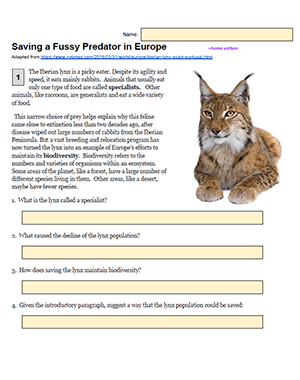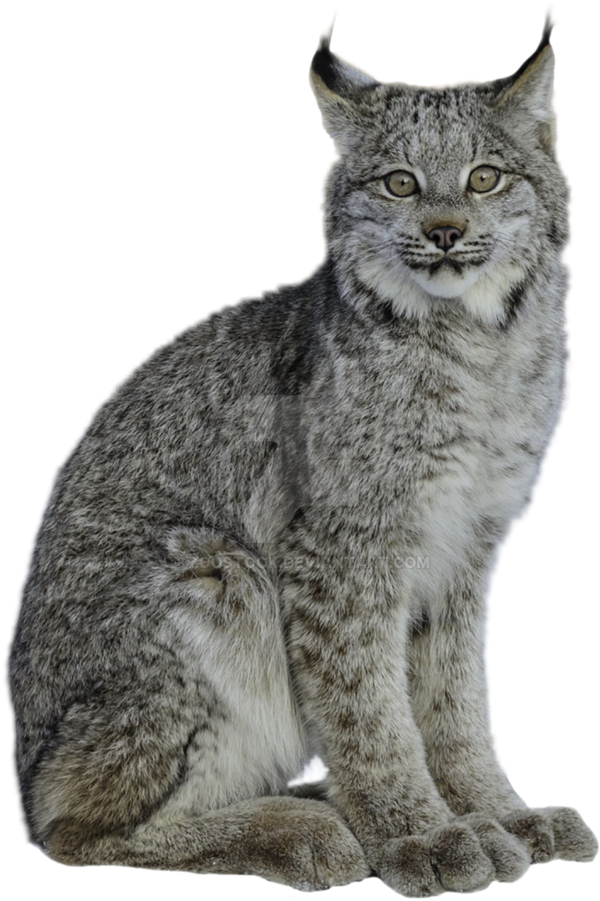
Read an article about the reintroduction of the lynx in Europe. A lynx is a type of feline. They are specialists, meaning that is has a very specific diet, the rabbit.
Introducing the lynx poses challenges, but many people welcome its return. They are large cats, and can also pose a danger to livestock and even people.
This worksheet is based on an article that highlights how the conservation efforts of the Iberian lynx have brought the animal back from the brink of extinction. The lynx suffered became endangered after its main source of food, the European rabbit declined. The rabbit population declined after a virus reduced their population. The decline in rabbits resulted in a decline in their predators.
Where did the virus come from? It was also introduced years ago as a way to control rabbit populations. The decline in rabbits affected other species, an unintended consequence.
Students answer questions as they read an article and answer questions. The text boxes for answers were included to make it easier for students to input their own answers and for me to grade them when submitted on Google Classroom.
I introduced this topic after students studied trophic cascades using HHMI Click and Learn. My overall goal is for students to complete a project that examines the interactions of organisms within an ecosystem to develop ways to sustain biodiversity. I’ll post this project later, it’s still in development and I plan to use it for my final exam grade.
Time Required: 20-30 minutes (online)
Grade Level: 8-12

HS-LS2-6 Evaluate the claims, evidence, and reasoning that the complex interactions in ecosystems maintain relatively consistent numbers and types of organisms in stable conditions, but changing conditions may result in a new ecosystem

